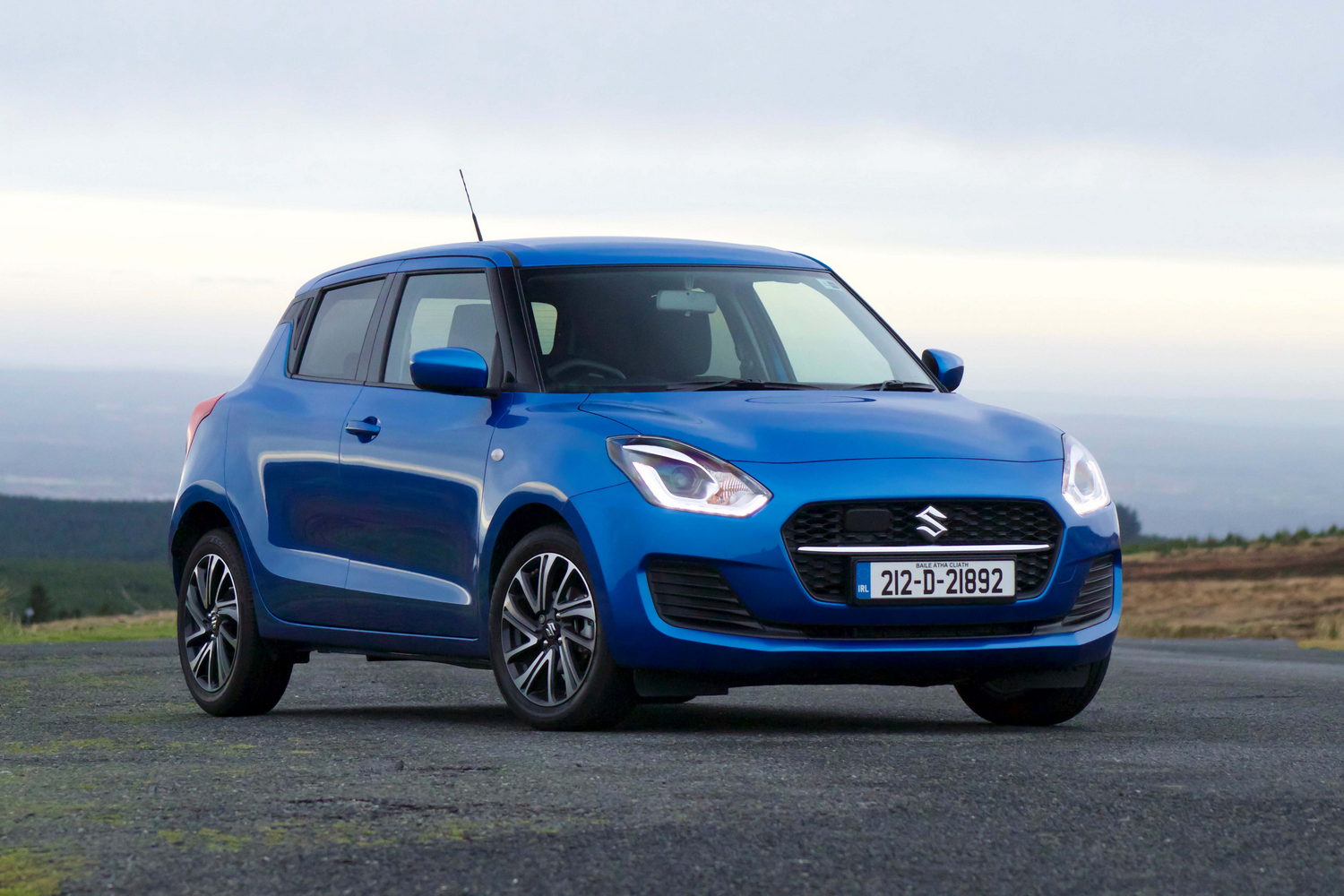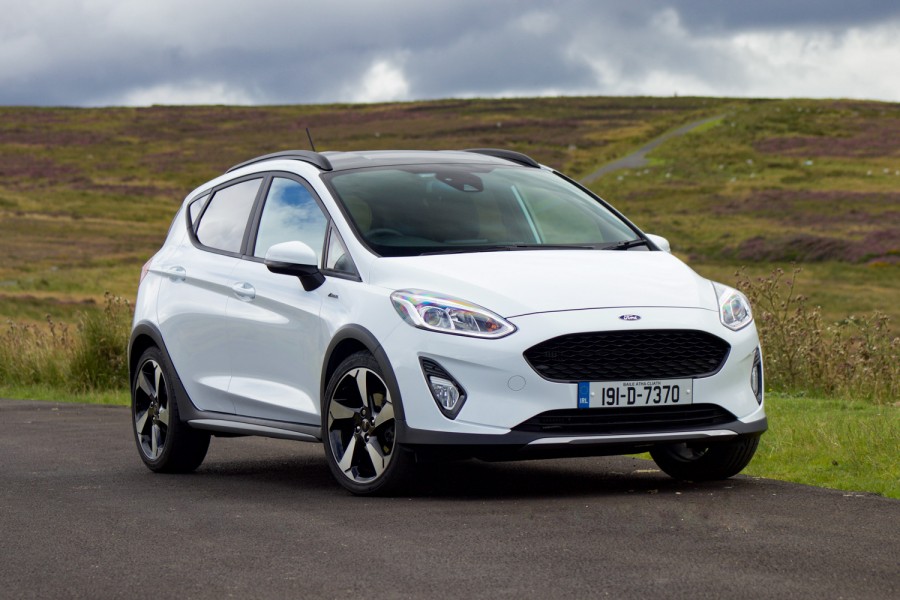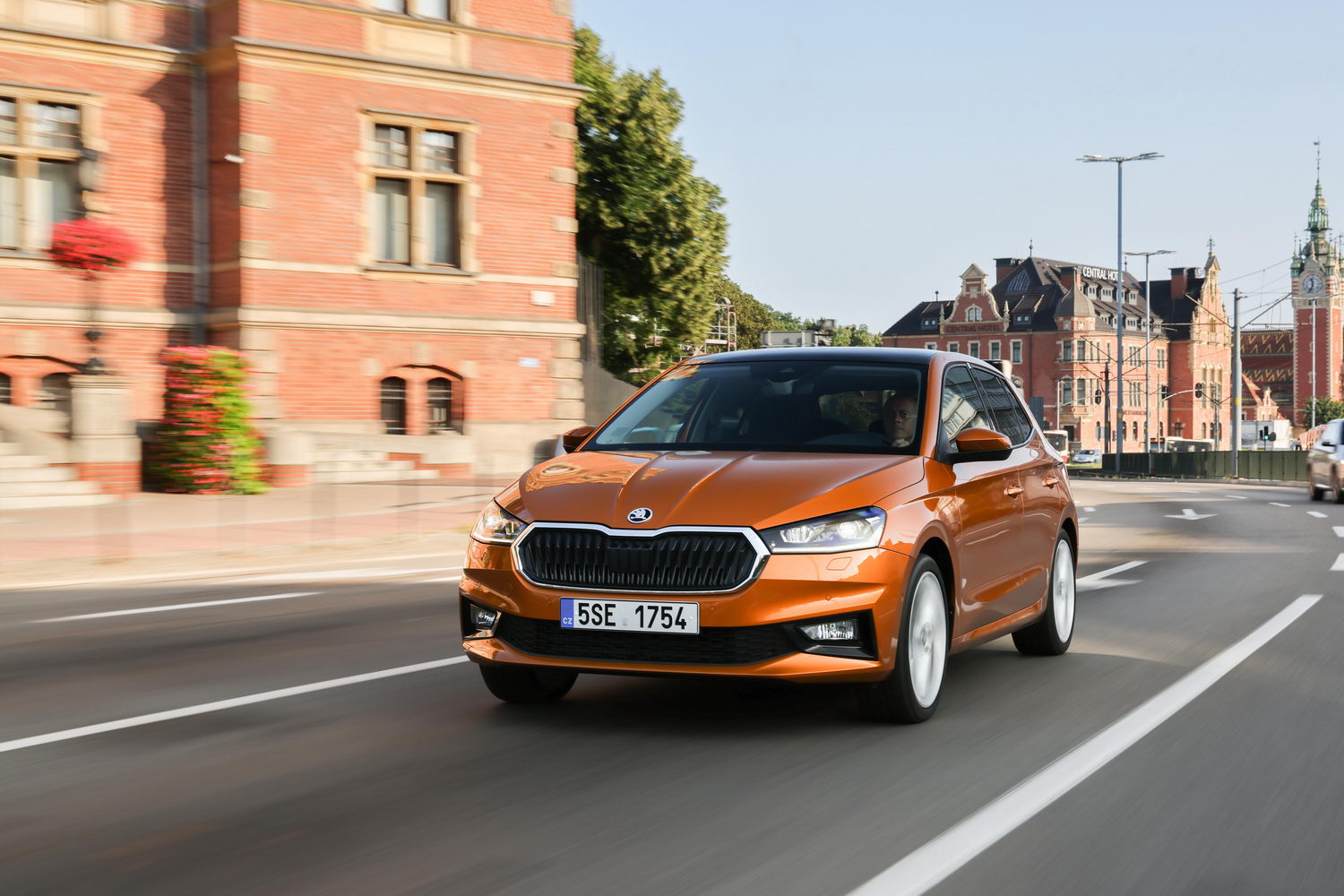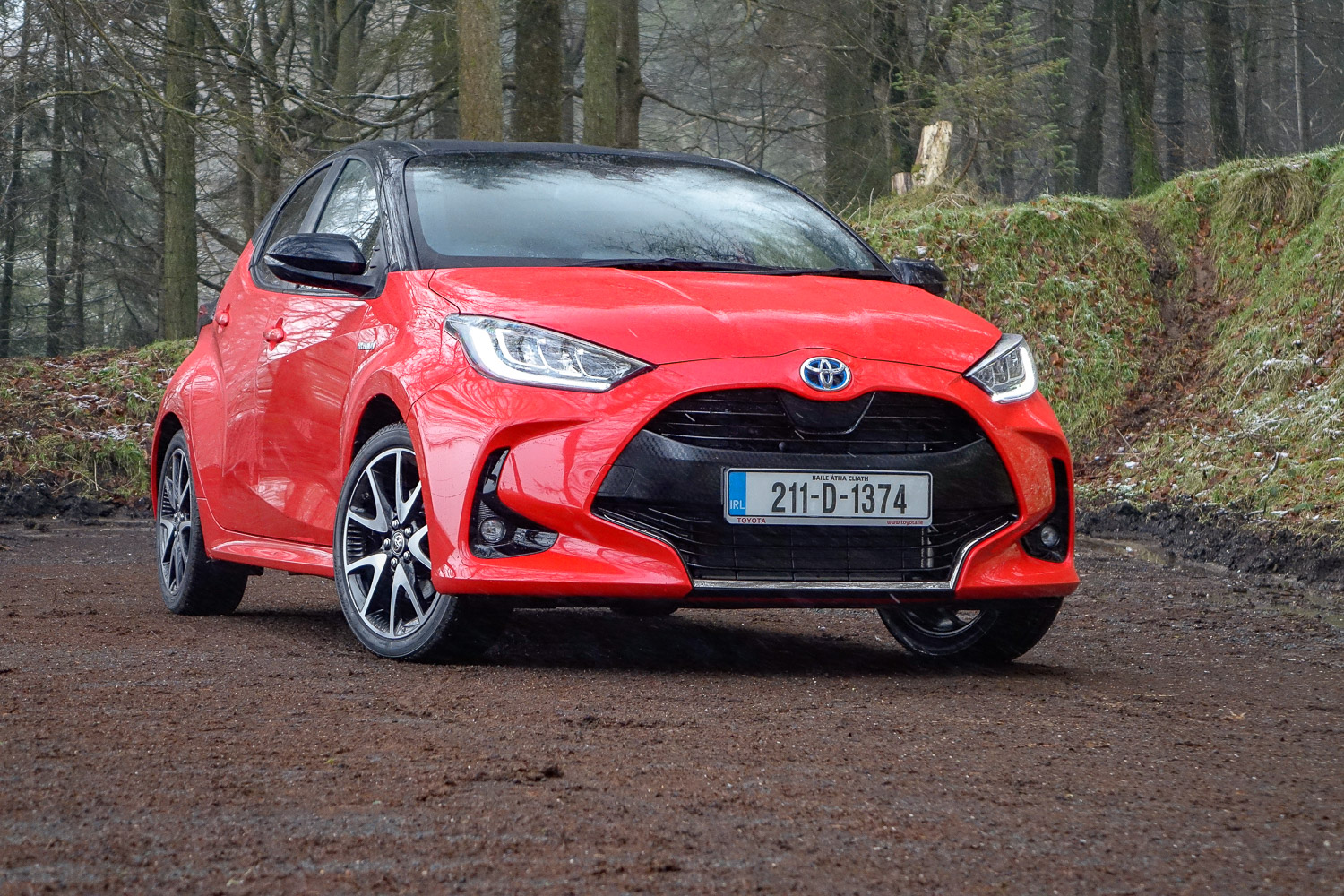Suzuki Swift Hybrid overview
The dinky little Suzuki Swift has been a firm favourite at CompleteCar.ie ever since the name was resurrected for the cute-as-a-button 2005 model. Since then, Suzuki has wisely stuck with the basic styling language of that 2005 model, albeit much updated since, and hasn't deviated too far in mechanical terms. The Swift remains a refreshingly simple, front-drive car powered by a frugal petrol engine.
A little more frugal, this time around, thanks to the addition of the new 'K12D' 1.2-litre four-cylinder petrol engine, which gains a 12-volt mild-hybrid system (which Suzuki has decided to label as a 'Hybrid', which might cause a little confusion...). While the price of the Swift has bulged, as have those of all its competitors, it remains a relatively affordable and well-equipped car. Can it keep up with the likes of the Ford Fiesta and big-selling Toyota Yaris, though?
The Suzuki Swift model range
The cheapest Swift, at €17,775, is the SZ-L model. That comes with the 1.2-litre mild-hybrid engine, as do all Swift models sold in Ireland - the 1.0-litre BoosterJet three-cylinder and the 1.4-litre turbocharged Sport model don't appear on Irish price lists anymore. SZ-L models come as standard with LED headlamps, 16-inch alloy wheels, daytime running lights, radar brake support, adaptive cruise control, Apple CarPlay and Android Auto connections for the central infotainment screen, a reversing camera, air conditioning, a leather-wrapped steering wheel and rear privacy glass.
Upgrade to the SZ-T model and the price grows to €19,180, but you get painted alloy wheels, extra sensors for the autonomous braking system, lane departure warning with weaving alert, a blind-spot monitor, rear cross traffic alert, traffic sign recognition and rear parking sensors.
Finally, there's the top-spec SZ5 grade, which costs €21,320 and comes with polished alloy wheels, built-in navigation, rear electric windows, a steering wheel that adjusts for reach as well as rake, keyless entry and ignition, automatic air conditioning and extra tweeter speakers for the stereo.
All Swift models use the same engine, so all get the same 106g/km CO2 emissions rating, except for those fitted with the (€2,070) optional CVT automatic transmission. That is only available on the SZ5 model, and has CO2 emissions of 115g/km. The four-wheel-drive AllGrip model that Suzuki offers in some markets is, again, absent from Irish price lists.
Suzuki currently has a 0 per cent PCP finance offer in place for the Swift, which assumes a customer deposit of €3,635 and a final balloon payment of €6,525, with monthly repayments of €206. Check out the Suzuki Ireland website for the most up-to-date offers.
The Suzuki Swift Hybrid interior
Can an interior be both basic and well-equipped at the same time? It can when it's the Swift interior... There's no denying that with standard air conditioning, a touchscreen, a digital trip computer and adaptive cruise control, that our test SZ-T-spec Swift was well-equipped. Equally, there's no question that with plain black fabric seats, lots of hard, shiny plastic and the need to actually physically insert and twist a key to get the engine going that it's basic.
However, we don't mean basic as an insult - far from it, as the Swift's cabin is pleasantly laid out, has logical and simple controls and is really comfortable, at least for those sitting in the front. The driving position is well sorted, and the front seats are reasonably supportive even on a longer journey. The controls look last-century, but when you've spent the past few months - as we have - fiddling with overly awkward touchscreens and 'slider' controls, the simple rotary switches for the Swift's heating, ventilation and air conditioning are an absolute god-send. They are also, it's worth noting, far safer to use when on the go, as you don't have to take your eyes off the road to do so...
The main analogue dials are straightforward and clear, and the little black-and-white digital screen between them is, again, basic but usefully informative. The software for the central touchscreen is a little fiddly if you're using Suzuki's home-grown software, but most of us will just plug in our phones and use Apple CarPlay or Android Auto, so that's OK. Down below the screen and the heating controls is a USB socket, an aux-in socket (if you're being VERY early 2000s...) and a 12-volt connector. The steering wheel gets straightforward multi-function controls for the stereo and cruise control, and there's a pair of neat-looking round air vents mounted high on the dash, above the centre screen.
In the back, things are very much more basic again. Like, really, really basic. There's not a USB nor arm-rest in sight, just a plain, black bench seat that split-folds in 60:40 formation. Space is pretty tight back there - headroom is OK, but legroom is in short supply. In fairness, the Swift is a good bit shorter than most rivals (at 3.8 metres when most are a hair beyond 4.0 metres) and it's no worse than the benchmark Toyota Yaris for rear-seat space. One thing, though - burying the rear door handles up high in the blacked-out part of the pillar looks neat from a styling point of view, but they're slightly awkward to use, and too high up for smaller children to be able to let themselves in.
Speaking of small, the boot is at just 265 litres (a five-door MINI hatchback actually offers slightly more...). You can fold the back seats to expand that to 579 litres, but the seats don't actually fold down to the floor level, leaving an awkward step if you're trying to load anything bulky or heavy.
One thing is worth noting, though. For all that the Swift uses relatively cheap materials - plastics, fabrics, switches etc - throughout the cabin, it never at any point actually feels cheap. Everything is impressively well put together, and Suzuki's reputation for solid build quality and reliability is an enviable one.
The Suzuki Swift Hybrid driving experience
The capital H in the Swift Hybrid's name might have you expecting that the Swift will be able to run around town for short sprints on electric power alone. It can't - it's a mild hybrid, not a Toyota-style 'full' hybrid, and as such it can't run on electric power. Really, the 12-volt system is an upgraded stop-start system, so it kicks in earlier and restarts quicker around town.
The mild-hybrid system, with its integrated starter/generator instead of an alternator, can actually boost the engine's power a little when you accelerate. It has a maximum output of 2.3kW, which equates to an additional 3hp, but a much more useful 50Nm of torque. That's a lot, when you consider that the engine by itself is pumping out only 107Nm to go with its 83hp, and so at low-to-medium speeds the Swift actually feels a little livelier than its 13.1-second 0-100km/h time might suggest. It's also a sweet, smooth-revving engine, although it does lack the nice little growl that you get from rival three-cylinder petrol units.
Does the mild-hybrid system deliver in terms of fuel economy? Actually, yes - we pretty easily averaged 5.6 litres per 100km, which isn't quite as good as the official 4.8 litres per 100km figure, but not bad considering that we spent a lot of time on the motorway, and the Swift has only a five-speed manual gearbox. You'll probably get closer to that official figure if you drive more gently, and more urban-ly (that's a word, right?).
One thing that the Swift has had on its side is a sense of fun in its driving, and that hasn't changed here. The steering is light, and the Swift is easy to manoeuvre around town (aside from a slight lack of over-the-shoulder visibility), but it also feels responsive and engaging out of town. It's a timely reminder that small, light, frugal cars can often be more enjoyable to drive than heavier, more powerful alternatives.
There are two downsides - the Swift's overall refinement is nothing too clever, with quite a bit of road roar at main road cruising speeds, and the ride quality is relatively poor, with the suspension often thumping noisily over obstacles.
Our verdict on the Suzuki Swift Hybrid
In this latest updated model, Suzuki hasn't changed the Swift all that much, which underlines its traditional identity as 'Suzuki's 911.' It remains cute to look at and characterful to drive, and now has better economy than before thanks to the uprated mild-hybrid engine. The refinement and ride flaws are also carried over, but the Swift's combo of low price, high equipment levels and handling chutzpah mean it's still a compelling supermini choice.
What do the rest of the team think?
I reckon it's because the Swift is such good fun to drive that it still curries favour among motoring journalists, as the rest of the supermini sector has moved on in terms of interior ambience. Nonetheless, it is well-priced and well-equipped as well. I managed 5.2 litres/100km with less motorway driving than Neil, but it's a shame you're so aware of the hybrid system recuperating energy as it slows the car. And the suspension really should be softer...
Shane O' Donoghue - Editor


























